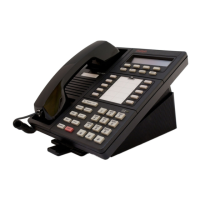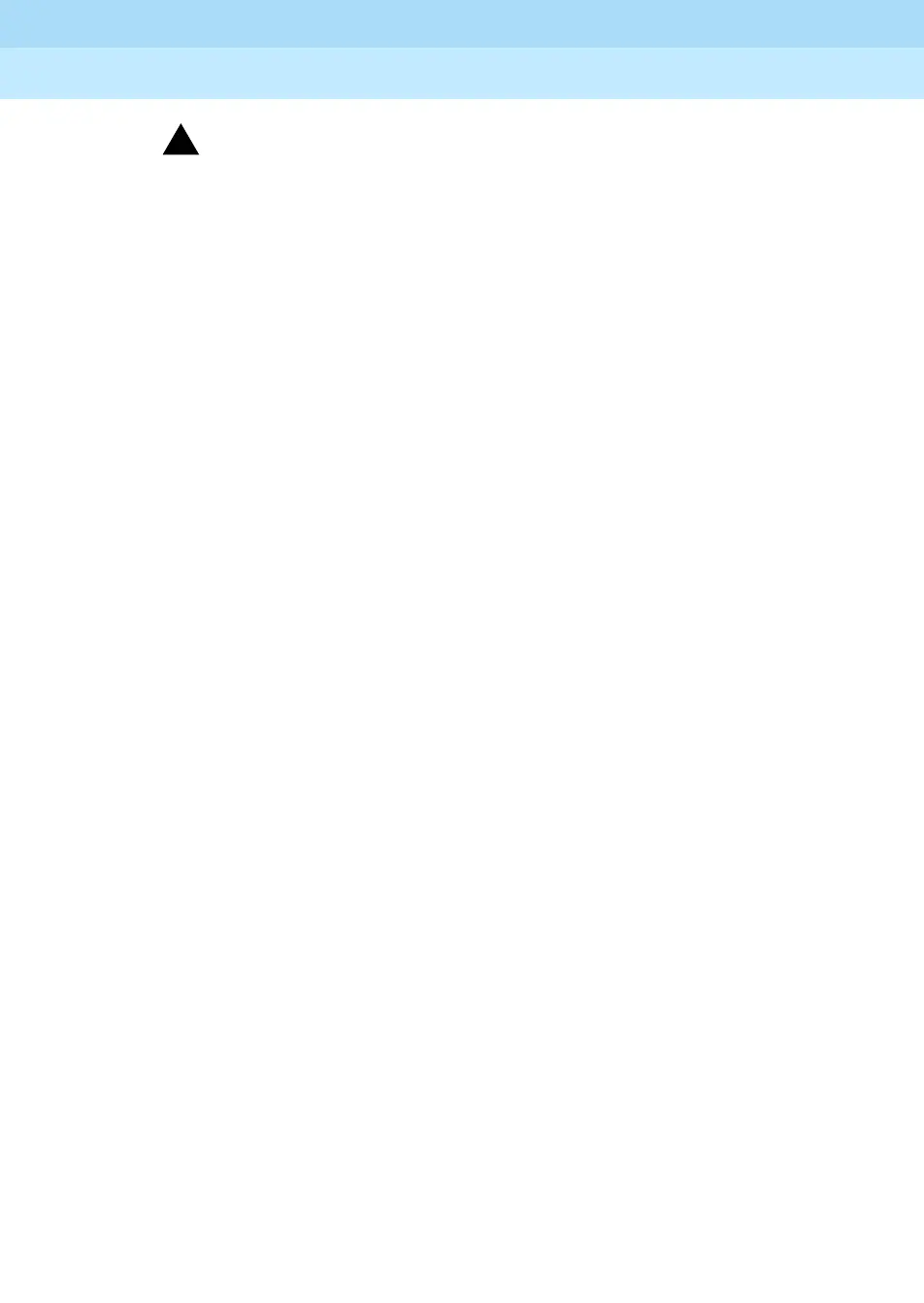MERLIN LEGEND Communications System Release 6.1
Feature Reference
555-661-110
Issue 1
August 1998
Features
Page 72Automatic Route Selection
CAUTION:
!
Unless networked systems are collocated, each system should have
at least one loop-start line connected to the PSTN. The line is
required to allow connection of a power-failure telephone to the
Power-Failure Transfer (PFT) jack on a module as a power outage
backup and for correct routing of emergency and other N11 calls. To
ensure that the correct services are reached, if the loop-start line is
used for emergency or other N11 calls, it should be assigned to the
main pool. In this case, IXC calls determine the number of loop-starts
required. See “Power-Fallure Transfer” on of this guide for more
information.
■ Default Toll Table. This factory-set table routes toll calls to numbers that
do not match entries in any of the area code, 6-digit, or 1 + 7 digits tables.
This table has two subpatterns of up to six routes each, but neither
absorbed digits nor system-prefixed digits are used.
■ Default Local Table. This factory-set table routes local calls to numbers
that do not match entries in the local exchange tables. This table has two
subpatterns of up to six routes each, but neither absorbed digits nor
system-prefixed digits are used. In Release 3.1 and later systems, routes
assigned to the Default Local Table are factory-set with an FRL of 2.
The system can have up to 20 tables, 16 of which are fully programmable. The
Dial 0, Special Numbers (N11), Default Toll, and Default Local tables are factory-
set and allow limited programming.
Each table (where appropriate) can have two subpatterns (A and B) with an
associated start time. The start time for Subpattern A is specified as the stop time
for Subpattern B. One subpattern or the other is selected, based on the time of
day and the subpattern start time. (If both subpatterns have 00:00 start time,
Subpattern A is selected.) Each subpattern can contain up to six routes, listed in
order of preference or cost effectiveness.
In addition, each route has an FRL associated with it. The FRL is used to refine
the route selection process further. Each extension, remote access barrier code,
and remote access default Class of Restriction (COR) is assigned an FRL from 0
through 6. Each route is also assigned an FRL from 0 through 6. For extensions, 0
is the most restrictive and 6 is the least restrictive level. For lines/trunks, 6 is the
most restrictive and 0 is the least restrictive level. An extension can use a route
only if its FRL is greater than or equal to the route’s FRL. For Release 6.0 or later
systems (Hybrid/PBX mode only), refer to the
Network Reference
for information
on private network call routing.
Other digits or special characters may be required so the system can route a call
on a particular pool. For example, some companies use an alternate toll call
carrier that requires dialing the number with Pause characters and access codes.
Each ARS route may have up to 20 characters that are automatically prefixed
when a user dials a number. The allowed characters are the digits 0 through 9, *,

